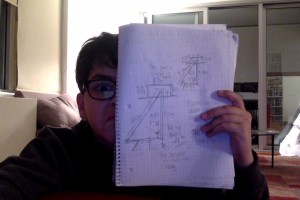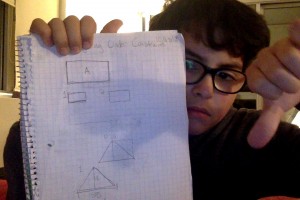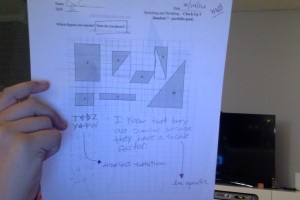Content
Colonial Woodworking Note Card Example
Note cards
Colonial Woodsmen
Source:
Kalman, Bobbie. The Woodworkers . Crabtree, 2002. Colonial People.
Pages:
8
Quote:
“Woodsmen cut down trees and prepared the wood for other woodworkers to use. Woodsmen were also called axmen because they used a felling ax to cut down trees. Skilled woodsmen looked for healthy trees with straight trunks because they knew that these trees produced the best lumber to construct homes and other buildings.
Cutting down trees was dangerous work. A falling tree moved so fast that sometimes a person could not get out of it’s way. A tree could easily crush someone under it’s weight! Woodsmen had to be very careful when they felled, or cut down, trees. Before they made any cuts, they checked the direction of the wind. Even a slight breeze could change the direction in which a tree fell.”
Paraphrase:
Woodsmen were the first step in a woodworking project.
More advanced woodsmen look for trees with good trunks.
Chopping trees was a dangerous job.
Woodsmen could get crushed by a tree if they weren’t careful.
Tree’s could easily crush anyone.
Before they started chopping the tree, they would check which way the wind was blowing, because the wind can effect which way trees would fall.
Even a small breeze could change the way it fell.
My Ideas:
Being a woodsman sounds like a really bad job. It was probably a very low paying job. I can infer that no woodsmen every past the middling class. I wonder how common it was for woodsmen to get crushed by trees. Would a woodsman have an apprentice. Where would woodsmen live? It wouldn’t make sense to live in the city, because there isn’t much wood, but it’s hard to get wood to urban carpenters in the city if you like in the country. How long would it take to prepared one log? Natives and Africans would use a different type of ax. African axes would have almost a hook that they would use. They would get it about halfway into the tree, and then turn it like a can opener, until the tree fell. The Native ax was a long stick that was sharp on the end. On the side was a rock that was smooth. Then they would whack the bottom and dig the roots up, until the tree was out of the ground.
History:
Created: 10/26/2016 10:09 AM
Rotocopter Design
The rotocopter helped me learn about design. Having to design the rotocopter to make it go slower and faster was really fun and hard. We had to make our own design from scratch. We didn’t get a template for the rotocopter, so we used lined paper. We made the wings bigger so it would catch more air and fall slower. For our fast rotocopter we added tons of paper clips. It was really fun and in the end the two teams ended with a tie. (Which really sucks)
Ecosystems Simulation Games
The ecosystem games were really meaningful and helpful. It really helped me understand the ecosystem better. It showed the consequences of any organism eating too much. Adding different mods to the game was really cool. Adding new species made it much more realistic, and made ecology a little easier to understand.
Reaction To BBC Article
1) “Cities will need to incorporate the natural world in new and innovative ways. Parks and green spaces will be multiplied from ground level upwards, attracting birds and wildlife to sky-gardens, tens of floors up. In Singapore, for example, the Marina Bay Sands hotel features a skypark on the 56th floor, with trees, leisure facilities including a pool, and far-reaching views.”
This is saying we need to plant more plants and be greener. We need to think about other species besides ourselves and bring more biodiversity into the city.
2) “Creative growers are already converting industrial spaces, street corners and rooftops to micro-wildernesses or manicured into formal gardens. A disused raised railway in New York City has become a popular park, self-styled “guerilla gardeners” are planting flowers and trees in plots among the tarmac and traffic of London’s highways, and once-polluted industrial wastelands now chirp with birdsong, rivers swim with fish and populations of animals that have become rare in the countryside are thriving in urban niches.”
This shows that we need to be more resourceful and make more things like the High Line and have more street islands with plants.
3) “There is already a new field of urban ecology for scientists who study the city and biophysical interactions within it, in a similar way to traditional ecosystem research.”
This means that we are starting to take care or other species that aren’t just ourselves.
4) “In other places, the mix of human-introduced plant and animal species, and those opportunists that migrate to the urban environment, are interacting to produce unique ecosystems that exist nowhere else.”
The city is its own unique ecosystem that some animals can survive in.


